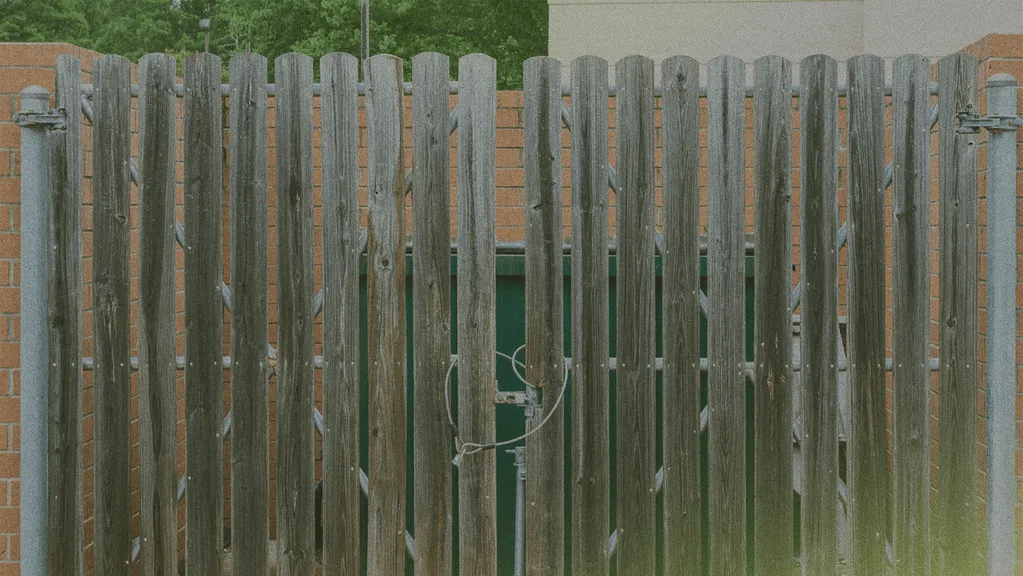Step 1: Choose a Material
The material you use will shape how the enclosure looks, how long it lasts, and how much upkeep it needs. The most common enclosure materials are vinyl, wood, concrete, and chain link.
Think about what matters most to you: do you need something sturdy, low-maintenance, or just something that looks good with the rest of the property? If you're trying to decide, our guide to dumpster enclosure types can help you weigh the pros and cons.
Step 2: Marking and Digging the Post Holes
Use stakes and strings to mark the boundaries of the enclosure.
Then dig post holes along those lines. The exact size depends on your materials, but a good rule is to make them about three times wider than the posts.
Step 3: Installing the Posts
Place the posts in the holes and use 2x4s to keep them upright. Check that everything is level and straight.
Pour quick-set concrete into the post holes, allowing it to set and secure the posts firmly. Follow the manufacturer's instructions for the appropriate curing time.
Step 4: Attaching the Rails and Framework
Connect the posts with horizontal rails to form the basic structure.
Secure the rails to the posts using screws, bolts, or other appropriate fasteners.
Step 5: Installing the Panels or Fencing Material
Step 6: Adding Gates and Doors (If Applicable)
Pro Tip: Make sure to always follow the directions provided by the manufacturer when setting up your enclosure.
If building a dumpster enclosure is just one part of a larger cleanup, renovation, or construction job, you may need a solution for handling all the waste along the way. Sourgum offers roll-off dumpster rentals in a variety of sizes, from small 10-yard containers for minor cleanouts to 40-yard options for serious debris. Order online and get next-day delivery without any hidden fees.
Maintenance Tips for a Long-Lasting Enclosure
Taking care of your enclosure doesn’t take much, but it makes a big difference. With a little regular maintenance, you can avoid bigger issues down the line and keep everything looking clean and working like it should.
Cleaning and Sanitation
Rinse out the enclosure now and then to get rid of dirt, trash, and bad smells. A pressure washer works well, but even a hose and a stiff brush can do the job. Don’t forget to scrub the corners, hinges, and latch areas since they tend to collect the most grime.
Waste Management
Make sure garbage actually goes in the dumpster and not around it, since overflow, spills, and loose trash can wear down the enclosure faster and attract pests.
Inspecting and Repairing Damages
Look over the enclosure every so often for damage. If you spot cracks, rust, loose parts, or anything that looks off, take care of it before it gets worse.
Depending on the issue, you might just need a quick patch, or you may need to swap out a panel or tighten some bolts.
Rust Prevention
If you're building a metal enclosure, make sure you're protecting it from rust with a good weather-resistant coating or paint.




